Ryan Hall's Blog, page 263
April 24, 2016
Photos: 2016 EDP Rock ‘n’ Roll Madrid Marathon
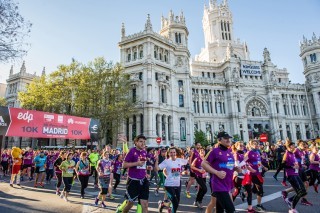
Peter Kiplagat of Kenya and Askale Alemayehu of Ethiopia were crowned winners of EDP Rock ‘n’ Roll Madrid on Sunday, an IAAF Silver Label Road Race.
Kiplagat won in 2:11:44, six seconds ahead of Patrick Cheruiyot. In the women’s race, Alemayehu’s 2:33:08 won by more than seven minutes.
The race was the 200th event in Rock ‘n’ Roll Marathon series history. Here are photos from the race, taken by Ryan Bethke:
Photo Gallery
1 of {count}
Back to Start
View Larger Image

View Larger Image

View Larger Image

View Larger Image

View Larger Image

View Larger Image

View Larger Image

View Larger Image

View Larger Image

View Larger Image

View Larger Image

View Larger Image

View Larger Image

View Larger Image
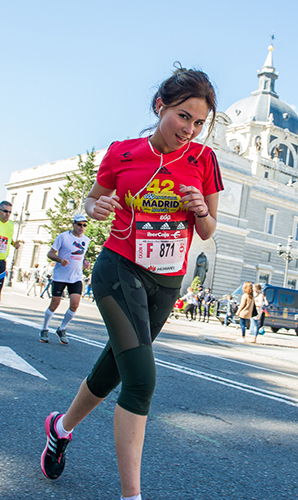
View Larger Image

View Larger Image

View Larger Image

View Larger Image

View Larger Image

View Larger Image

View Larger Image

View Larger Image

View Larger Image

View Larger Image
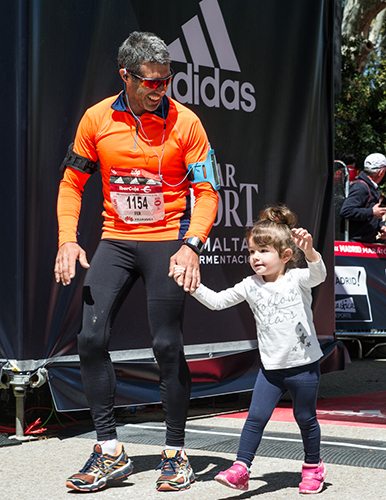
View Larger Image

View Larger Image

View Larger Image

Related Galleries
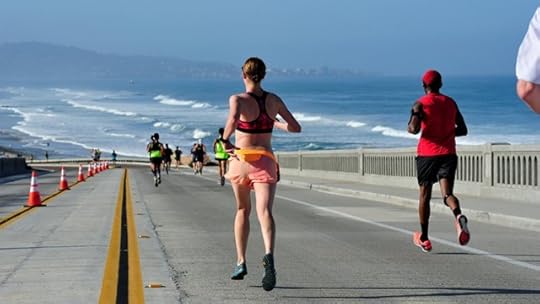
Photos: The Beautiful Scenery of the La Jolla Half Marathon
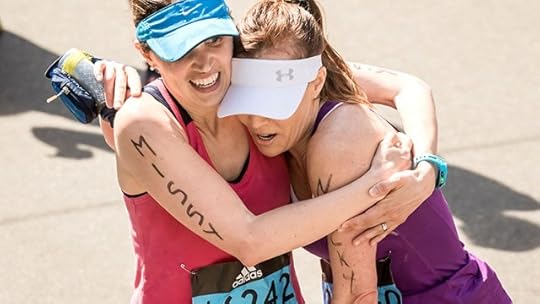
The Faces of Boston: Amazing Images from the 2016 Boston Marathon
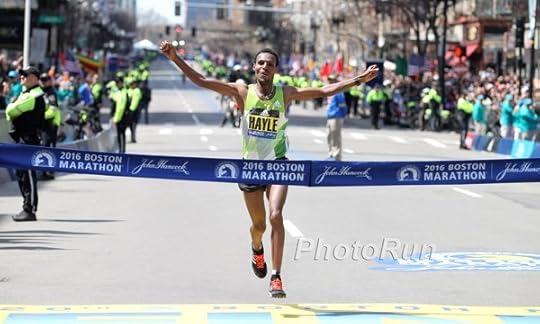
Photos: The 2016 Boston Marathon Elite Races
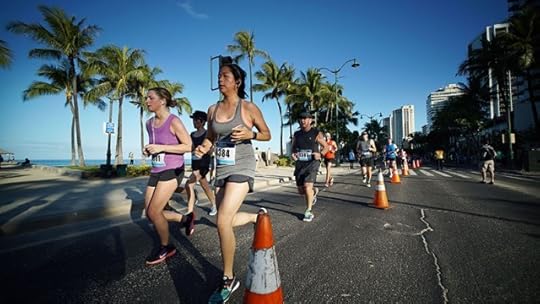
Photos: The 2016 Hapalua, Hawaii’s Half Marathon

More Galleries
The post Photos: 2016 EDP Rock ‘n’ Roll Madrid Marathon appeared first on Competitor.com.
Kenyan Eliud Kipchoge Wins London Marathon in 2:03:05
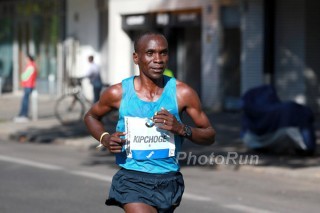
Kenyan Eliud Kipchoge, shown here winning the 2015 Berlin Marathon, won the 2016 London Marathon in 2:03:05 on Sunday.
LONDON — Even without a world record or an Olympic title to his name, Kenya’s Eliud Kipchoge has put together a record befitting the title of the greatest male marathon-runner of all-time. With his second victory in the Virgin Money London Marathon on Sunday in the second fastest time of history of 2:03:05, the 31-year-old has extended his win-loss record to six wins from seven starts. He has run 2:05:30 or faster each time and the average time of his five fastest marathons comes out at 2:04:01—a time which would have stood as the world record as recently as a decade ago.
In the end, Kipchoge came within eight seconds of the record which currently stands to Dennis Kimetto at 2:02:57 and that record might have been bettered this morning if the conditions cooperated.
“Half the race, we were running against the wind but it was okay,” said Kipchoge when questioned about the conditions by Tim Hutchings during the post-race press conference. “I can’t complain because all of us were facing the same problem.”
Not for the first time, the elite men went out at a furious pace with pacemakers Cosmos Lagat and Gideon Kipketer towing an initial group of nine through 5K in 14:16 and 10K in 28:37, close to two hour-pace for the distance. Kipchoge wasn’t fazed.
“Yes, I knew,” said Kipchoge when asked if he realized he was on such a terrific pace. “I saw the splits.”
The projected winning time began to slow through the second quarter with 15K and 20K reached in 43:17 and 58:10, respectively. A world record hasn’t been set in the men’s race in the London Marathon since 2002, and while this remained an unlikely prospect with so many runners still in contention, the halfway split of 61:24 this morning was the fastest in marathon history by three seconds.
At this point, Kimetto had drifted six seconds off the leading pack while course record-holder Wilson Kipsang, who fell at a drinks station around the 10K mark, and world champion Ghirmay Ghebreslassie from Eritrea both found the pace too much by the 25K checkpoint in 1:12:39.
“It was a good race and I felt OK. I fell down at 10K and the leg was getting painful [sic] after 25K,” Kipsang later tweeted.
The last pacemaker dropped out shortly afterwards with three athletes still in contention: Kipchoge, New York Marathon winner Stanley Biwott, and three-time Olympic gold medalist Kenenisa Bekele who was in the process of staging a popular return to form after eighteen months of persistent injuries. Bekele surprised reporters by saying he has only managed less than two months’ training before this race but his abbreviated build-up started to become apparent, as he lost ground on the Kenyans just before the 30K checkpoint in a pending world record of 1:27:13.
In contrast, Kimetto passed the same checkpoint in 1:27:38 in the German capital two years ago but thoughts in London at this point began to turn to the victory rather than the time: the 21st, 22nd and 23rd miles of 4:51, 4:47 and 4:50 were among the slowest of the race as Kipchoge and Biwott ran shoulder-to-shoulder for the most part.
But Kipchoge cranked up the pace again with a 25th mile in 4:38 to break away from Biwott. The reigning champion has no aspirations to move back to the track but Kipchoge dug up some of his noted track speed in the closing stages, covering the last 2.2 kilometers in one of the fastest splits in history of 6:16.
Kipchoge broke the tape in 2:03:05 and even though he put his hands to his face when he crossed the finish-line, Kipchoge wasn’t frustrated by his near miss.
“I realized I was a few seconds off the world record. It was not really disappointment,” he said on that gesture.
Biwott also joined the sub-2:04 club in second in 2:03:51 while Bekele concluded his return to shape by reaching the podium in third in 2:06:36.
“Running fast at the beginning was really tough for me,” said Bekele, who was only at ninety percent fitness heading into this race.
Ghebreslassie was next across the line in 2:07:46 while Kimetto, who finished third last year, drifted back to ninth in 2:11:44.
The top American in the race was Ruben Sanca, who placed eighth among all runners not in the elite field in 2:21:28. (His time was the 32nd fastest of the day.) The No. 2 American runner was Michael Wardian, who ran a 2:27:37 just six days after running a 2:31 at the Boston Marathon. The 42-year-old Arlington, Va., resident is on a quest to run all six World Marathon Majors in 2016.
Sumgong Falls, Recovers To Post Biggest Win To Date
Jemima Sumgong has been the perennial bridesmaid in Abbott World Marathon Majors races with runner-up finishes in the Boston, New York and Chicago Marathons to her name, and that banner win seemed an improbability with about eight kilometers remaining when she found herself thrown to the ground along with past winners Mary Keitany from Kenya and Aselefech Mergia from Ethiopia. Mergia appeared to clip Sumgong from behind, while Keitany fell separately.
Out of the three fallers, Sumgong seemed to come off the worst as she repeatedly held her head in pursuit of the chasers, but she was the only runner from the triumvirate to regain contact. And once she did, she ran with real intent: after a succession of slower miles in the 5:30-5:40 range, Sumgong assumed the lead and covered the 23rd, 24th and 25th miles in 5:15, 5:13 and 5:16 respectively.
World champion Mare Dibaba initially followed but toiled badly in the closing stages and wound up sixth in 2:24:09 but last year’s surprise winner Tigist Tufa put up a staunch defense of her title in a race which unfolded in a similar manner to last year with a large pack still involved in the latter stages.
Sumgong’s 25th mile of 5:16 drew a small gap over Tufa and while her gap wasn’t decisive, the Ethiopian couldn’t get back onto level terms with Sumgong. Sumgong lost out in the Boston Marathon in 2012 by two seconds and the New York Marathon in 2014 by four seconds but it was the 31-year-old’s day in London as she crossed the finish-line 2:22:58 to Tufa’s 2:23:05.
World half marathon record-holder Florence Kiplagat complained about blisters in the closing stages but notched up another podium finish in third in 2:23:39 while former international race walker Volha Mazuronak from Belarus ran a big negative second half split of 70:35 to claim fourth in a PB of 2:23:54 ahead of Mergia (2:23:57) and Dibaba (2:24:09). Improbably, Mazuronak ran the fastest last 2.195 K of the race: 7:08.
Keitany didn’t arrive in London in her very best shape and looked to be losing touch once or twice before she fell. That fall ultimately put paid to her chances of her third title as she faded back to ninth in 2:28:30.
Two months after dropping out of the U.S. Olympic Trials Marathon, Sara Hall had a much more positive experience at the distance in 12th in a lifetime best of 2:30:06. She was the only U.S. runner in the elite field.
RELATED: Michael Wardian’s Crazy, Globetrotting Running Quest
The post Kenyan Eliud Kipchoge Wins London Marathon in 2:03:05 appeared first on Competitor.com.
April 22, 2016
5 Ways to Become a More Sustainable Runner
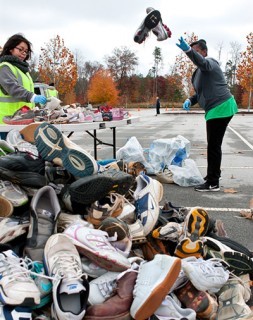
Photo: Shutterstock.com
Sustainability isn’t a concept that’s really given a second thought when it comes to running. But even the slightest decisions we make from the type of running gear we buy to how and where we go for a run has an impact on the Earth and its precious resources, especially when you multiply that by millions of runners (and still growing) around the world. So while you’re re-evaluating the physical imprint of your running habits, here are some simple tips for how you can incorporate more sustainable and eco-thoughtful practices doing the sport you love:
1. Donate or reuse old shoes
Where do your old pair of running shoes go when they’ve pounded enough miles? Most likely to the dump. However, there are a myriad of organizations that will take your old pair of running shoes and either give them to those who need shoes or repurpose the material to create other products. For example, the Nike Reuse-a-Shoe program takes worn out shoes and recycles them into a material called “Nike Grind” which is then used to surface running tracks, playgrounds and indoor/outdoor athletic courts. Here’s a list of more organizations nationwide that you can donate to.
Or find other creative uses for old shoes, such as transforming a pair into a makeshift outdoor planter or cutting off the back heel so you can use them as comfortable outdoor slippers while working in the yard.
2. Make smart purchases
Even though you donate your old running shoes and clothes, that’s only addressing the latter half of the product’s life cycle. Where you buy your gear and what it’s made of matters greatly. There are several factors that go into determining whether or not your running gear is sustainable, and that involves looking at what materials are being used to make it, where those materials are coming from and the actual manufacturing processes to produce it. Most running apparel is made of synthetic, petroleum-based materials such as polyester, lycra, spandex, which can all require heavy water usage or involve toxic chemicals during the manufacturing process if done incorrectly. Several brands either use recycled or natural, raw materials. Tasc Performance sources their fabrics from bamboo and implements a closed loop dyeing system that reuses 99 percent of the waste water. Other more sustainably-minded activewear companies include Patagonia, Prana, The North Face, Icebreaker, etc.
3. Avoid plastic water bottles
Even if you diligently recycle your plastic water bottles, according to the Container Recycling Institute, more than 60 million plastic bottles still make it to landfills every day in the U.S. alone. Plus, if you fill a single plastic bottle up with a quarter of crude oil, that’s how much oil it takes to make that bottle, which adds up to millions of crude oil barrels. Instead of grabbing a pack of plastic water bottles, invest in a lightweight reusable water bottle to take on your runs and even during races. All those tiny plastic and paper cups at the aid stations being thrown on the ground, are only contributing to the waste build-up.
4. Go on an eco run
Every once in awhile your run could be an efficient way to clean up your neighborhood or the local trails and parks nearby. When trash accumulates it not only looks, well, trashy, but it can also be harmful for the environment. Next time, take a small bag and a pair of latex gloves with you in case you encounter any trash on the run. Or organize a monthly group run centered around picking up trash for really affected areas.
5. Run to social events
Yes, planning your social gatherings around runs can actually be beneficial for the environment. Instead of driving to that delicious, hole-in-the-wall pizza place or that hip new brewery to meet your friends, gather those same friends to run to those places and cut down on your collected carbon footprint. This works best in urban areas where local businesses are a run’s distance, but plenty of running groups are now centering their runs around grabbing beers or a bite to eat afterward. And it makes that beer/pizza so much more rewarding.
The post 5 Ways to Become a More Sustainable Runner appeared first on Competitor.com.
McGillivray Completes 44th Consecutive Boston Marathon
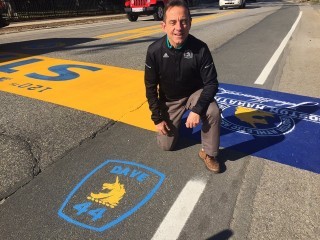
Boston Marathon race director Dave McGillivray poses at the Boston Marathon finish line and a logo that acknowledges his 44th consecutive finish.
Dave McGillivray is a busy guy most of the time. But during the Boston Marathon weekend in Boston, he takes things to a new level almost every year.
This year was no different. In addition to the dozens of meetings, appearances and roles tied to being the primary race director of the 120th running of the Boston Marathon, McGillivray, 61, also found the time and energy to run the race once again.
Late on Monday night, long after 26,639 runners had crossed the finish line, McGillivray ran the 26.2-mile course, too, along with Matt Auger from Mashpee, Mass., and Jason Todd from Newport News, Va., in about 4 hours, 29 minutes. The team was supported along the course by Ron Kramer and McGillivray’s brother Bob McGillivray, who has been with him for every nighttime marathon.
PHOTOS: The Faces of Boston 2016
“Leading up to the (2016) race, I constantly said that it felt like there was a sense of calmness and peacefulness to this year’s race and that is exactly how it all played out,” said McGillivray, president of DMSE Sports event production company. “All went well on race day and there were no major issues. It seemed like it was a fun day for all. And, there were so many inspiring stories throughout the day—they kept coming and coming and coming. The 2014 race was epic, but this year can truly be dubbed ‘The Year of Inspiration.’ ”
“As for my night run, it could not have gone better,” he said. “Slow and steady, but mission accomplished. It was a long day with a happy ending.”
RELATED: A Candid Interview with Dave McGillivray
McGillivray, who has now completed 145 marathons overall, was greeted at the finish line by his family, including siblings Susan West, Denise Potts, Alan McGillivray and Bob McGillivray.
McGillivray first gained national prominence with his 1978 cross country run—from Medford, Oregon to Medford, Mass.—that took 80 days and raised almost $150,000 for the Jimmy Fund—the first money any runner ever raised for a cancer charity, according to Runner’s World. He has completed a number of similar feats of endurance since his groundbreaking cross country trek, including a second cross-country run in 2004 from San Francisco to Boston as part of TREK USA, a relay team event that raised more than $300,000 for five children’s charities.
Over his career, McGillivray has logged more than 150,000 miles and completed nine Hawaii Ironman triathlons in addition to his 145 marathons.
McGillivray, a Medford native who lives in North Andover, Mass., is a pioneer in what is now one of the most important aspects of the endurance sports industry—combining athletics with philanthropy. Nearly every DMSE Sports event combines fitness and fundraising, giving back to the Jimmy Fund and Dana-Farber Cancer Institute, Children’s Hospital, Lazarus House and many others charities and non-profit organizations in New England and across the country. He along with all the events he has directed have helped raised more than $100 million for charity over the years.
RELATED: Top 20 Finishers at the 2016 Boston Marathon
The post McGillivray Completes 44th Consecutive Boston Marathon appeared first on Competitor.com.
Out There: 26.2 Life Lessons From the Marathon
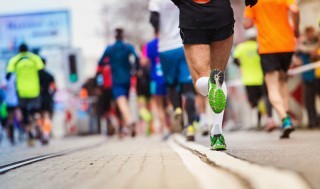
Every time I run a marathon, two things cross my mind:
1) Marathons are stupid. Why do I keep doing this to myself?
2) Marathons are amazing. Why don’t I do this more often?
I alternate between those two sentiments over the course of 26.2 miles, and one usually wins out by the finish line. Most of the time, I rejoice with my hands up in the air, wanting to know when I can do it all over again. Sometimes, it’s the “marathons are stupid” voice that propels from my mouth at the end, and I swear to never, ever, ever run 26.2 consecutive miles again.
So why, if marathons are so stupid, do I keep doing this to myself? Hell if I know. Madam Marathon has her claws in me, and try as I may to shake her off, I can’t.
And I’m okay with that. For as stupid as marathons are, they’ve actually made me smarter. Training for and racing a marathon is a fully transformative experience—mind, body, and spirit—and I find that when I move, my self-awareness needle moves. When I move a lot, as is required for 26.2 miles, my self-awareness needle moves a lot.
And as a result, the lessons from Madam Marathon make me a better person in all aspects of my life. And maybe that’s why I keep doing this to myself—because I’m not done learning yet. Or maybe I’m reading too much into things, and I’m just an idiot who doesn’t know when to say no. But I’m an idiot in progress, so that’s got to count for something, right?
At any rate, I’m learning, I’m growing, and by golly, I’m still running. What I’ve learned along the way:
The first step is often the hardest. It’s one thing to say, “I want to run a marathon.” It’s an entirely different thing to follow through.
If you want to do it, you have to do it. People can bullshit their way through a lot of things in life. The marathon is not one of those things.
Fear takes you places. And I’m not just talking about the finish line.
Your body is pretty damn impressive. It’s hard to bemoan your cellulite-ridden thighs when they just carried you for 26.2 freaking miles.
You know less than you know. Just when you think you’ve gotten this running thing nailed, something comes along and makes you feel like a total moron. Who knew there were life lessons in skinned knees and low glycogen?
Nobody really knows anything, anyway. It’s not just you. We’re all morons.
Failure is a success. You screwed up? Good for you! That means you tried, you learned, and you grew.
Bad weather is not a good excuse. Neither is laundry day, a poor night’s sleep, your dead iPod battery, a long day at work, a Disney movie marathon…
Running is not the solution to all of life’s problems, despite what some people advertise. Running won’t get you a job, pay off your mortgage, or bring back your loved ones from the dead. It’s just one kind of pain to distract you from another kind of pain.
Neither is your paleo/gluten-free/vegan diet, your minimalist/maximalist/bubblewrap shoes, or [fill in the blank]. So don’t get preachy. People tend to tune out preachy.
Your strength is probably your weakness, too. You can climb any hill, power through any speed session, and suffer like a champ. You’re also too strong for rest days and too stubborn to admit when you’re injured.
Joy is a rocket. Little boosts of speed come from the corners of your smile. So thank the volunteers, high-five that excited toddler, laugh at spectator signs, and in general try not to be an asshole.
Someone always has it worse than you. Every time you think you’re suffering more than anyone in the history of suffering has ever suffered, the Endurance Gods will place someone in your path who’s been through more and are overcoming it.
You can be a badass and a dumbass simultaneously. Case in point: at mile 22, you said, “You go, girl!” to encourage a fellow runner. He had a mustache.
Look at the path, not the obstacles. It’s all about perspective.
Appearances can be deceiving. The person you least expect to see in a marathon is usually the most inspiring one.
You do you. Don’t look to other people as a gauge for your success. The comparison trap is a nasty one.
It’s good to disconnect. In today’s hyper-plugged society, few things compare to the feeling of telling someone, “Oh, you called? Sorry, I was out for a run.”
Ask for help. You don’t have to go it alone.
Be open. People who run to lose weight sometimes gain two pounds plus a sense of badassery. Those who run for personal accomplishment sometimes lose weight on their way to the finish line. The transformation you want isn’t always the transformation you need.
26.2 miles is a long way. For real.
Just say it. At some point in every marathon, you’ll have to surrender to the fact that yes, 26.2 miles is a long way; yes, this is uncomfortable; yes, this kind of sucks, actually. It’s okay—even healthy—to admit that.
“I can’t go on” is a lie. You can totally go on, you sissy.
Simplify, simplify, simplify. This ain’t rocket science. Fancy whatsits and gizmos complicate something that doesn’t really need complication.
Look up. While you were dejectedly shuffling your feet or cursing out your GPS watch, you missed the most spectacular view.
You don’t have to wait until the finish line to celebrate. Sometimes, the little victories along the way mean more than the finisher’s medal.
.2 But damn, that finisher’s medal is pretty cool, too.
* * *
About The Author:
Susan Lacke does 5Ks, Ironman Triathlons and everything in between to justify her love for cupcakes (yes, she eats that many). Susan lives and trains in Salt Lake City, Utah with three animals: A labrador, a cattle dog, and a freakishly tall triathlete husband. She claims to be of sound mind, though this has yet to be substantiated by a medical expert. Follow her on Twitter: @SusanLacke.
The post Out There: 26.2 Life Lessons From the Marathon appeared first on Competitor.com.
Gear We Love: April 2016
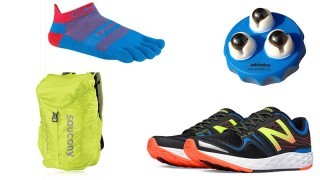
Spring is here, and with it is new gear that our editors are loving. Here’s a sample:
Photo Gallery
1 of {count}
Back to Start
View Larger Image

Addaday Marble Massager
"This massager may not look like much, but it gets the job done when I need to quickly work out a cramped muscle or sore spot. It fits in the palm of my hand with ergonomic hand grips that allow me to add firmer pressure on a specific area. The marbles are magnetic, which give it a smooth feel when rolling on my quads, hamstrings, glutes, and sometimes for relieving
neck/shoulder pain from sitting at a desk all day. I keep this at my work desk, but it's small enough to store in my purse and an ideal massager to
take on trips instead of a bulky stick or 'travel-size' foam roller." —Emily Polachek, associate editor ($27, addaday.com)
Related Galleries

Gear We Love: March 2016

Gear We Love: February 2016

Gear We Love: January 2016

Gear We Love: December 2015

More Galleries
The post Gear We Love: April 2016 appeared first on Competitor.com.
Kenyan President Signs Bill Into Law Criminalizing Doping
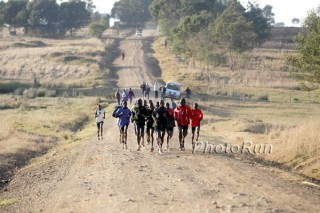
A group of runners in Kenya. Photo: PhotoRun.net
In an effort to avoid being kept out of the Olympic Games in Rio, Kenya’s president Uhuru Kenyatta signed a law on Friday that criminalizes doping in his country. The bill was fast-tracked through parliament by Kenyatta and passed by lawmakers on Tuesday.
“Let me be clear that this law is the continuation, not the end, of our efforts to stand against cheating and corruption in the sporting and athletics arena,” Kenyatta told The Associated Press.
Athletes found guilty of doping will be fined $30,000 and face a three-year prison term.
Kenya, which has come under heavy scrutiny in recent months for its lack of drug testing and corruption within its governing body’s ranks, been facing increasing pressure from the World Anti-Doping Agency to clean up its act and set up a national anti-doping agency, or risk having its athletes banned from international competition.
“Today, I am confident that WADA will look upon the passage of our anti-doping law favorably as a sign of our unwavering commitment to meeting the highest international standards,” Kenyatta said after signing the bill.
RELATED: Kenyan Marathoners Accused of Paying Bribes To Lessen Doping Bans
The post Kenyan President Signs Bill Into Law Criminalizing Doping appeared first on Competitor.com.
April 21, 2016
Road Mile, Donut Mile Added To Festival of Miles Lineup in St. Louis
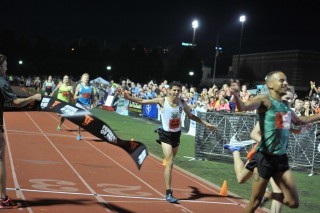
Jordan McNamara breaking the finish line tape at last year's Festival of Miles event in St. Louis. Photo: Katie Sutton/Festival of Miles
One of the country’s most popular single-event track meets—The St. Louis Festival of Miles—is adding another day and two new races to this year’s lineup. In addition to a first-class charity track meet that features races for kids, the best high school runners in the country and Olympic level professional athletes, this year’s event will also feature The Riverfront Mile, a 1-mile road race for runners and walkers of all abilities, as well as the Strange Donuts Mile, which challenges its participants to eat four donuts during the course of the race. The track meet will take place on Thursday, June 2 at St. Louis University High School, while the road races will happen on Friday, June 3 in downtown St. Louis.
The new event celebrates the grand reopening of the riverfront as part of the CityArchRiver project with running, donuts, beer and a post-race party on historic Laclede’s Landing.
“We just asked ourselves how can we get people interested in this event that wouldn’t normally attend a road race and the donut mile was our answer,” says Ben Rosario, Festival of Miles Foundation Board Member. “Plus, June 3rd is National Donut Day!”
Since 2008, The Festival of Miles Foundation has raised more than $50,000 for athletes in need. It’s also seen some fast times in recent years. Last June, Grant Fischer became the seventh U.S. high school boy to run under 4 minutes in the mile with a 3:59.38 clocking.
“We work extremely hard to put on an unforgettable event for sports fans. Every year we try to outdo ourselves to make the event bigger and better than ever,” said Ben Rosario, Festival of Miles Foundation Board Member. “At this point you’d have to say it’s vital for race organizers to think outside the box and come up with new ideas to spice up their event. And that’s just the nature of the entertainment business, which is what racing is.”
The post Road Mile, Donut Mile Added To Festival of Miles Lineup in St. Louis appeared first on Competitor.com.
3 Must-Do Marathon Workouts

There’s no doubt that the marathon is a difficult event. At 26.2 miles and lasting several hours for most runners, it’s one of the most challenging races one can enter.
Just stand at the 24–mile marker at any major marathon and you’ll see injured runners hobbling toward the finish line—faces twisted in agony—with form that more closely resembles a limp than a run.
But one of the most effective ways of making the marathon easier and more accessible is to train appropriately. With smarter season planning, runners will reduce their injury risk, enjoy the race more, and earn a faster finishing time. What’s not to love about that?!
Sound training begins months and months before the race. With a proper base of endurance and general fitness, most runners will have excellent marathon performances provided they run smart marathon workouts.
Here you’ll learn the most effective workouts to improve your marathon. Since this race is over 99 percent aerobic, there’s no need to hammer 400-meter repetitions on the track—instead, we’re focusing on endurance-oriented marathon workouts.
And it all starts with better long runs.
Marathon Workouts #1: The Specific Long Run
There’s no better workout for marathoners than the long run. It’s the most specific to the race itself, meaning it most resembles the marathon and contributes most to your level of preparedness.
For these reasons, runners should complete a long run every week (with an optional cut-back long run every 3-4 weeks). While the purpose of early-season long runs during the base phase of training is to increase general endurance, there comes a time when long runs must become even more specific.
That’s when runners can implement goal pace running during the long run to maximize fitness and the odds of success on race day.
In its simplest form, a specific long run includes 2-5 miles of Goal Marathon Pace (GMP) at the very end of the run. Running at goal pace—on tired legs—is a fantastic way of simulating what you’ll experience during the marathon.
More experienced runners can run more mileage at goal pace. For example, a 20-mile long run can end with 10 miles of GMP running.
These runs force your body to become more efficient, boost specific endurance for the marathon, and teach you to use less carbohydrate. There’s no better “bang for your buck” workout for marathoners.
Marathon Workouts #2: The Progression Run
Any marathoner knows that overall effort will increase dramatically in the marathon—especially after the 20th mile.
To help prepare the body (and mind) for the rigors of an ever-escalating expenditure of effort, progression runs can be used during training. These aerobic workouts are best used in the first half of a marathon training cycle and are great foundational workouts before faster, more sustained lactate threshold-effort runs are incorporated.
A progression run is executed by gradually speeding up over the final miles of the run so that the last 3-5 minutes are at your tempo or threshold pace. More challenging progressions are longer (not faster).
Most runners can start with 2-3 miles of progression running at the end of an otherwise easy run. Every few minutes, the pace quickens so that runners are gradually running faster and faster.
More advanced runners can do 5-7 miles of progression running. But again, faster is not better! This is an aerobic workout, so the fastest pace that’s reached is about threshold pace during the last several minutes of the run.
This type of workout helps increase general endurance, mental resiliency, and helps runners transition to more challenging workouts later in the training season.
Marathon Workouts #3: The Lactate Clearance Run
I personally cursed my college coaches for prescribing this workout—it’s a tough one!
Lactate clearance runs are a type of tempo workout. The twist is that you periodically surge to about 5K pace or slightly faster for 30-60 seconds before settling back to tempo pace.
The surge puts the pace much faster than tempo—thereby introducing significantly more lactate into the blood stream. Lactate is responsible for that uncomfortable and often painful burning sensation that’s present in hard interval workouts or short races.
When you settle back into tempo pace after the surge, the body is forced to clear that lactate as best as it can while still running at a challenging pace. This helps the body process lactate more efficiently, ultimately helping push your lactate threshold pace slightly faster.
Lactate threshold has a direct correlation with endurance and performance, so there’s no surprise this type of workout can improve your marathon finish.
Since this workout is quite stressful, it’s best to run them once every 2-3 weeks during the mid-late phase of marathon training. More traditional tempo, progression, and goal pace workouts will make up the rest of your workouts.
Armed with smarter and more specific workouts (as well as a focus on intelligent mileage increases and injury prevention), there’s no doubt runners who train more purposefully will be better marathoners—more confident, less prone to injury, and faster!
RELATED: Are You Making These Marathon Training Mistakes?
* * *
About the Author:
Jason Fitzgerald is the head coach at Strength Running, one of the web’s largest coaching sites for runners. He is a 2:39 marathoner, USATF-certified coach and his passion is helping runners set monster personal bests. Follow him on Twitter @JasonFitz1 and Facebook.
The post 3 Must-Do Marathon Workouts appeared first on Competitor.com.
Google Maps Producing ‘Street Views’ of Western States 100 Course
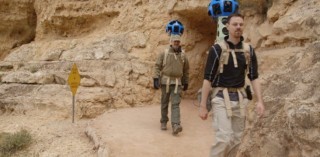
With help from the American Trail Running Association, Google Maps is going to start documenting trails with a new backpack-mounted camera system.
Ever wonder what a trail race course really looks like before you run it? Google Maps is working on a way for you to find out.
Three years ago, Google made the Grand Canyon the inaugural subject of its Street View Trekker, a wearable backpack system that allowed 9,500 panoramic images to be shot in areas only accessible by foot. The ability to take Street View to remote, hard-to-navigate places, such as the Grand Canyon, can make those places accessible to a global audience.
Next up is the course of the Western States 100 trail race from Squaw Valley to Auburn, Calif. The American Trail Running Association (ATRA) announced recently it is working in conjunction with Google Maps to digitally map the course of the Western States 100. In June, ATRA will capture panoramic “street-view” imagery of the entire 100-mile Western States trail using Google Map’s backpack-mounted camera system.
The resulting imagery will enable fans of the Western States 100 Mile Endurance Run to view the entire length of the trail from the comfort of their home, or on the go with any mobile device. Currently only a few hundred people have the fitness and privilege to run Western States; now anyone with a computer can see what the runners see during their journey from Squaw Valley to the Auburn High School track.
Led by ATRA’s online marketing director Richard Bolt, the expedition of three to four trail runners will hike 20 to 25 miles each day with the 40-pound backpack-mounted camera system during the week of June 20. The expedition will be documented by experienced outdoor photographer Myke Hermsmeyer and trail running news website iRunFar.com.
ATRA’s expedition team will be showing off the trekker backpack system on June 24 at the Western States Expo the day before the official race start.
After the Google Maps team has processed the image data, users will be able to view it on ATRA website at http://trailrunner.com/western-states-trekker or on one of their partner sites. They’ll also have an official image launch event at the Outdoor Retailer Summer Market, August 3-6, in Salt Lake City, Utah.
“By enabling us to experience trails in a new way, the Street View effort is inspiring runners everywhere to explore new places and push their own boundaries,” says Jason Smith of Trail Run Project. “We are excited to support ATRA in this mission to capture one of the world’s most iconic race courses.”
RELATED: Trail Run Project’s Comprehensive Interactive Trail Database
“I think this project is great because it allows everyone to explore the historic Western States trail, whether they are prospective runners, concerned family members, or just those inspired by the original 100-mile footrace,” says Connor Curley, Sports and Community Marketing Associate for Salomon.
RELATED: Trail of the Week—Rim to Rim to Rim in the Grand Canyon
The post Google Maps Producing ‘Street Views’ of Western States 100 Course appeared first on Competitor.com.
Ryan Hall's Blog
- Ryan Hall's profile
- 21 followers



